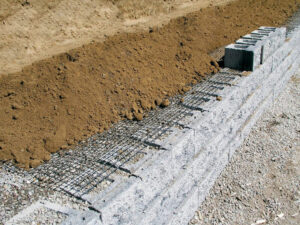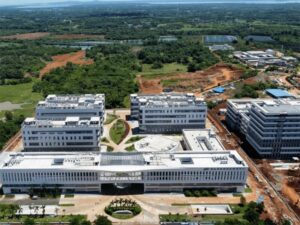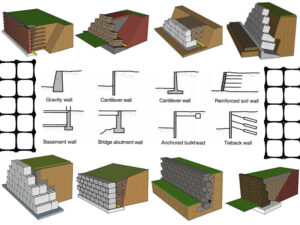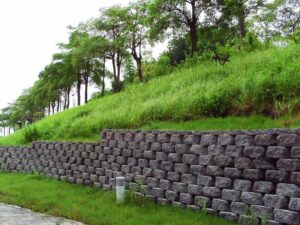Geomembrane Liner and Clay Liner Used For Landfill
Landfills are sites for waste disposal, where layers of trash are compacted and covered with soil to prevent pollution.
Geomembrane liners and clay liners are crucial in protecting the environment from potential risks associated with landfills. These materials serve as primary defenses against leachate contamination, ensuring that harmful substances do not enter and pollute groundwater.
Geomembranes are designed to create a secure barrier, preventing leachate from infiltrating surrounding soil and contaminating groundwater. Their durability, chemical resistance, and flexibility make them the preferred choice for landfill containment systems.
Clay liners expand when wet, forming a low-permeability barrier, making them very effective in preventing liquid migration. In landfill applications, GCLs are often used alongside geomembranes to provide an additional protective layer, particularly in composite liner systems.
By forming a robust multi-layer containment system, geomembranes and clay liners help maintain the integrity of landfills and protect the natural environment.
Geomembranes and GCLs Introduction
Geomembranes and GCLs play an important role in landfill projects, each material having distinct characteristics, functions, and uses. Click the button below to learn more about the product information.
HDPE Geomembrane
Composite Geomembrane
Geosynthetic Clay Liner
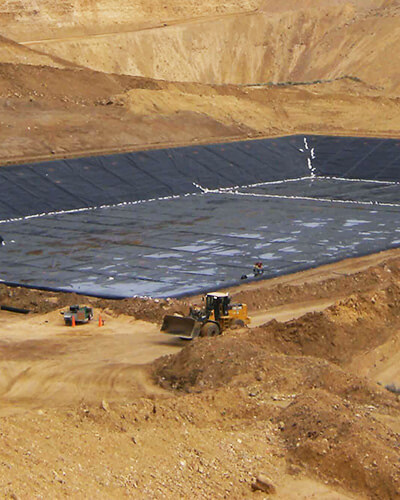
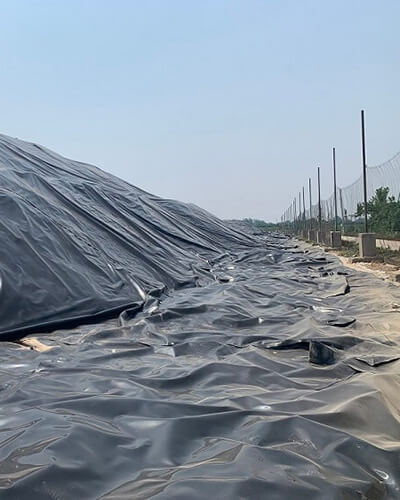
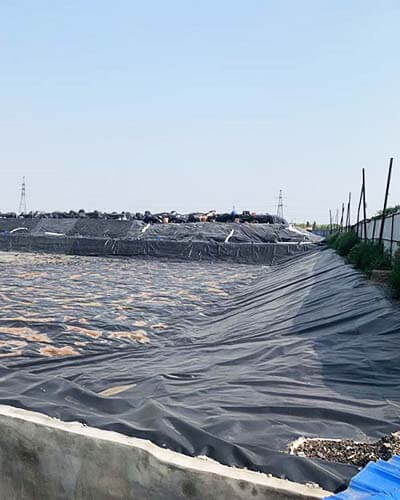
GeomembraneLiners Are Used In Landfills
Geomembranes serve as specialized barriers for seepage and waterproofing, making them a critical component in landfill design. They are the primary liner material used to prevent leachate (liquid released from waste) from contaminating surrounding soil and groundwater. Among them, HDPE landfill liners are favored for their excellent chemical resistance and long-term durability.
In landfills, HDPE geomembrane liners primarily act as barriers to contain leachate and prevent its leakage into the environment. Key applications include liners at the bottom of the landfill, cover liners, and leachate management pond liners. This is essential for protecting nearby water sources and maintaining the integrity of the landfill.
Additionally, HDPE geomembranes can control the escape of harmful gases, such as methane, produced in landfills. They play a significant role in maintaining the overall stability of the landfill by providing a consistent and reliable barrier that supports the overlying waste and minimizes underground movement.
Clay Liners (GCL) Are Used In Landfills
Geosynthetic clay liners consist of a thin layer of bentonite clay sandwiched between two layers of geotextile. Bentonite clay can expand when hydrated, forming a low-permeability barrier, making clay liners an effective choice for landfill applications.
GCL is typically used in conjunction with geomembranes to create composite lining systems. This dual-layer approach provides an additional line of defense, ensuring that even if the primary geomembrane fails, the GCL can prevent leachate from migrating into the environment.
In landfill systems, clay liners excel in leachate control. The low permeability of bentonite in GCL effectively prevents leachate (potentially hazardous liquid generated from waste) from infiltrating surrounding soil and groundwater, which is crucial for protecting groundwater resources and soil environments.
Additionally, a key feature of GCL is its self-healing capability. If the liner is punctured or damaged, the bentonite expands upon contact with water, filling small holes or gaps and maintaining the integrity of the barrier.
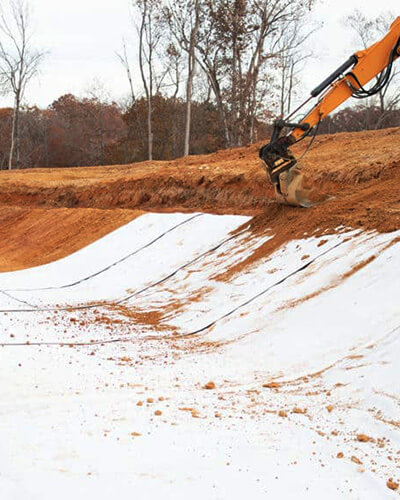
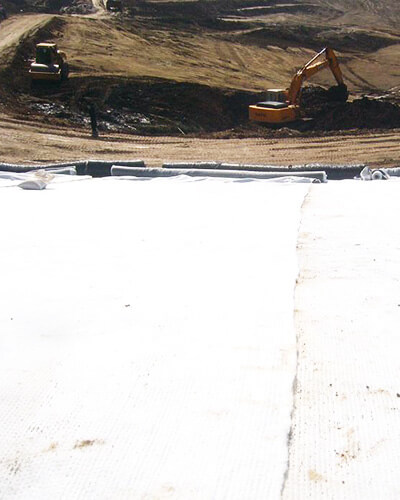
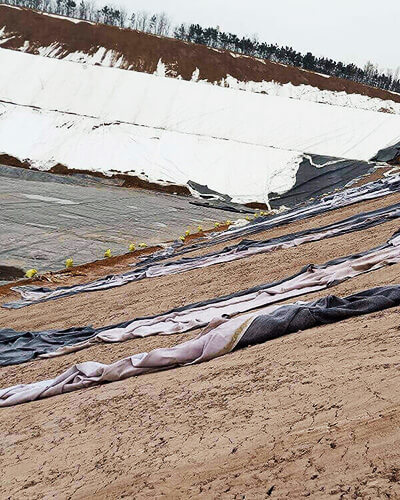
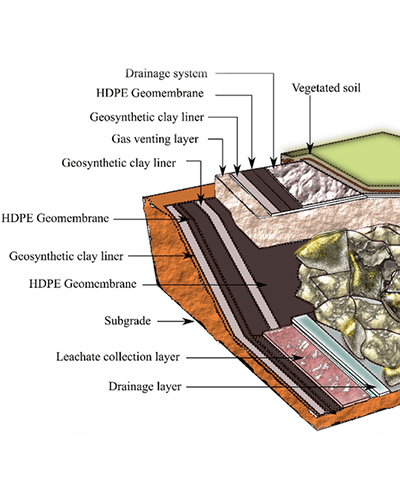
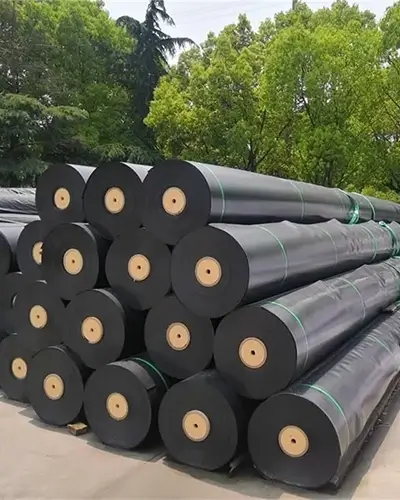
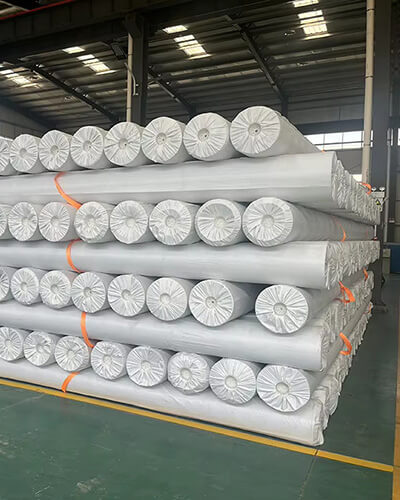
How to Choose Geomembranes and GCL for Landfills
Selecting the appropriate geomembrane liners and clay liners for landfills requires consideration of project requirements, material selection criteria, environmental factors, and more.
In landfill applications, GCLs are often used alongside geomembranes to provide an additional protective layer, particularly in composite liner systems.
Project Requirements
Understand the types of waste processed at the landfill, including whether it handles hazardous or chemically corrosive waste.
Environmental Factors
Variations in local climate, temperature ranges, precipitation, and freeze-thaw cycles can impact the performance of geomembranes and GCL. In extreme climates, materials with high durability and flexibility are essential.
Material Selection
Geomembrane Selection
Geomembrane liners are mainly divided into HDPE, LLDPE, and composite types. In landfill applications, HDPE liners are widely used due to their chemical resistance, durability, and cost-effectiveness.
Thickness: The thickness of the geomembrane affects its puncture resistance and durability. Thicker geomembranes provide better protection but may be more challenging to install.
Chemical Resistance: The geomembrane must be able to resist leachate generated in the landfill. This requires an understanding of potential chemical interactions and selecting materials that will not degrade over time.
Appearance Requirements:
- No significant serration on cut edges
- No perforation repair points
- No mechanical scratches
- Fewer than 10 clumps per square meter
- No bubble impurities
- No cracks, delamination, or joints
- The surface of the rough membrane should be uniform, without clumps or defects
Common Specifications for HEPE Liners Used in Landfills: In landfills, geomembranes typically have a thickness of no less than 1.5 mm. The width should not be less than 6.5 m, and the roll length should be between 50-100 m.
Clay Liner Selection
GCLs are typically selected with a sodium-based core layer. Sodium-based bentonite waterproof blankets are commonly used in industrial production due to their high viscosity and large expansion volume, making them more suitable for landfill leakage prevention.
Weight: The effectiveness of GCLs largely depends on the unit area of the bentonite waterproof blanket used. A greater quantity of bentonite with consistent expansion capability is crucial for forming an impermeable barrier.
Type of Geotextile Wrapping Bentonite: The geotextile surrounding the bentonite layer is usually non-woven. The choice depends on the strength, durability, and flexibility required for the liner. Non-woven geotextiles provide better filtration and permeability.
Appearance Requirements: GCLs should have a smooth surface, uniform thickness, and be free of holes and ragged edges. There should be no residual broken needles.
Common Specifications for GCLs Used in Landfills:
- The unit area mass should not be less than 4800 g/m², with the unit area bentonite mass not less than 4500 g/m².
- The bentonite volume expansion should not be less than 24 ml/2 g.
- The peel strength should not be less than 65 N/10 cm.
- The tensile strength should not be less than 800 N/10 cm.
- The permeability coefficient should be less than 5 × 10⁻¹¹ m/s.
- There should be no leakage under a static water pressure of 0.6 mPa for 1 hour.
Recent Projects
Discover our recent client projects and explore the range of tailored, personalized support we provide. Share your requirements and receive the ideal solution.
Recent Company News
Explore our newest releases, stay informed with industry updates on geosynthetics & geocomposite, and delve into technical insights about geotechnical products. For any queries, reach out to us for customized assistance.
Frequently Asked Questions
The types of geomembranes are HDPE and LLDPE, with thicknesses of 1 mm, 2 mm, and 3 mm. Widths range from 1 to 8 m, and lengths are between 50 to 100 m. GCLs primarily consist of sodium-based bentonite, with a weight greater than 4000 g/m², widths from 1 to 8 m, and lengths of 50 to 100 m.
Both geomembranes and GCLs are certified to ASTM or ISO standards.
Based on our testing and feedback from long-time users, our geomembranes and GCLs perform very well in various landfill environments. This is primarily due to our thorough understanding of user project conditions, allowing us to recommend the most suitable specifications and materials.
Geomembranes have an expected lifespan of around 50 years in closed environments like landfills, while GCLs have a lifespan of approximately 30 years.
The installation of geomembranes and GCLs is straightforward, mainly involving laying, welding, and overlapping. Required tools include scissors and welding machines. For detailed information, please refer to the links below.
Our professional technicians can provide timely support and technical training, including installation, welding, and cutting.
Costs vary based on different materials, thicknesses, and weights. Please email QIVOC for the best product quotation. Delivery times generally range from 7 to 15 days, depending on the quantity required and the shipping method used.

